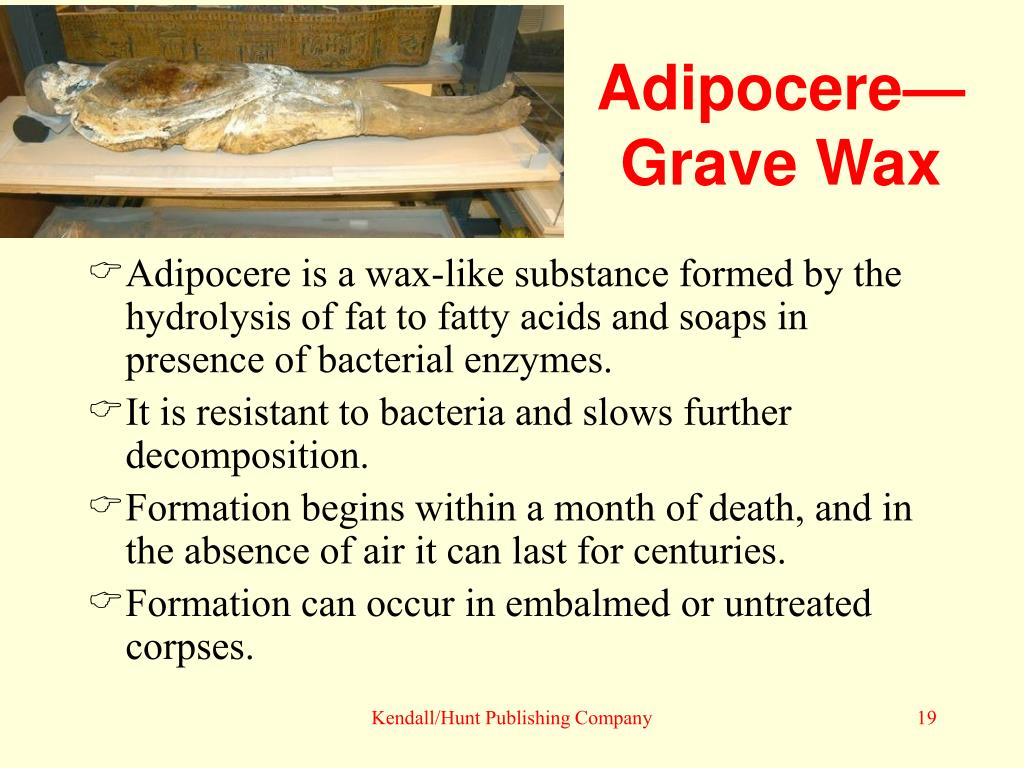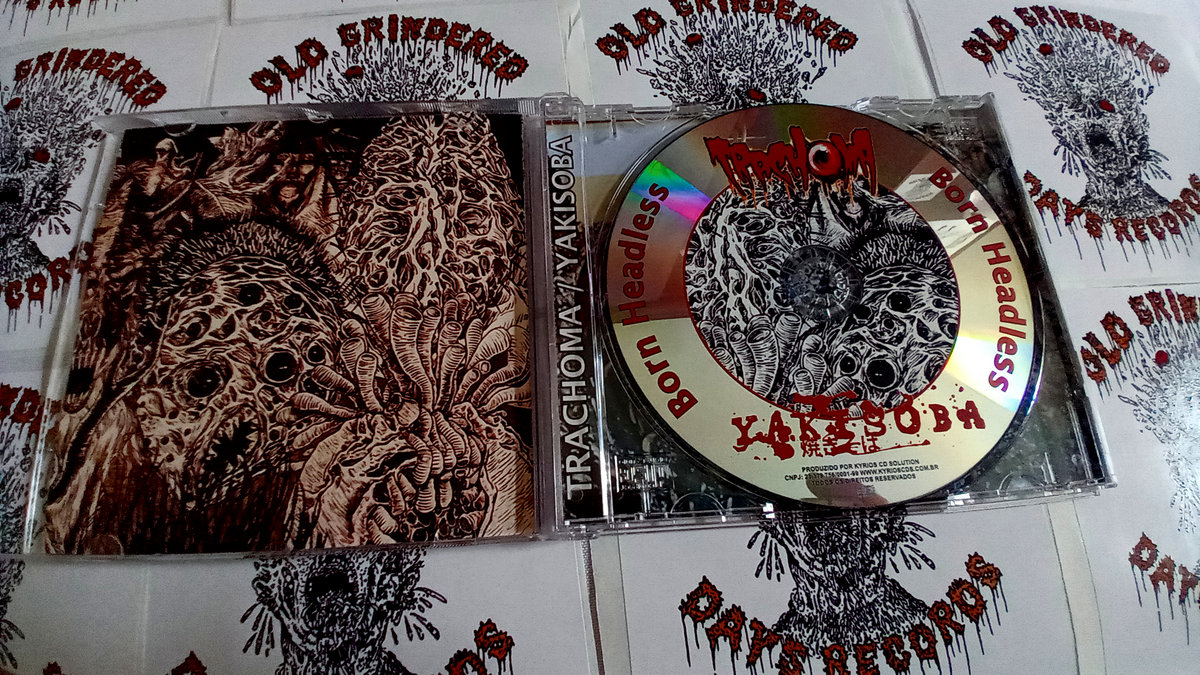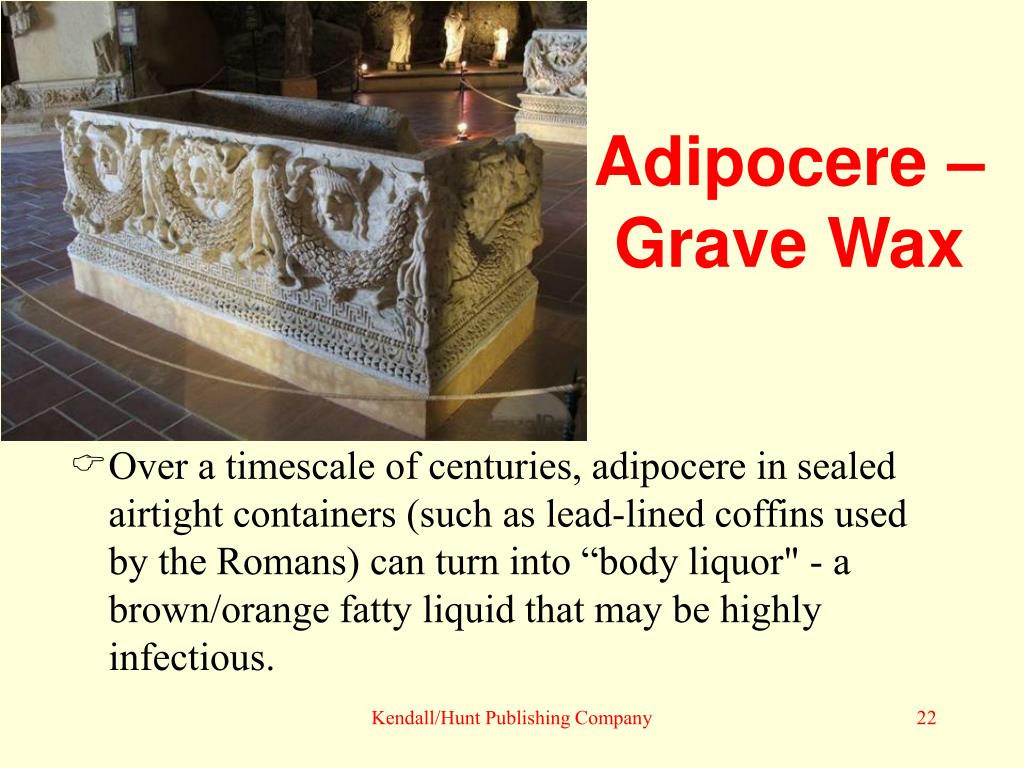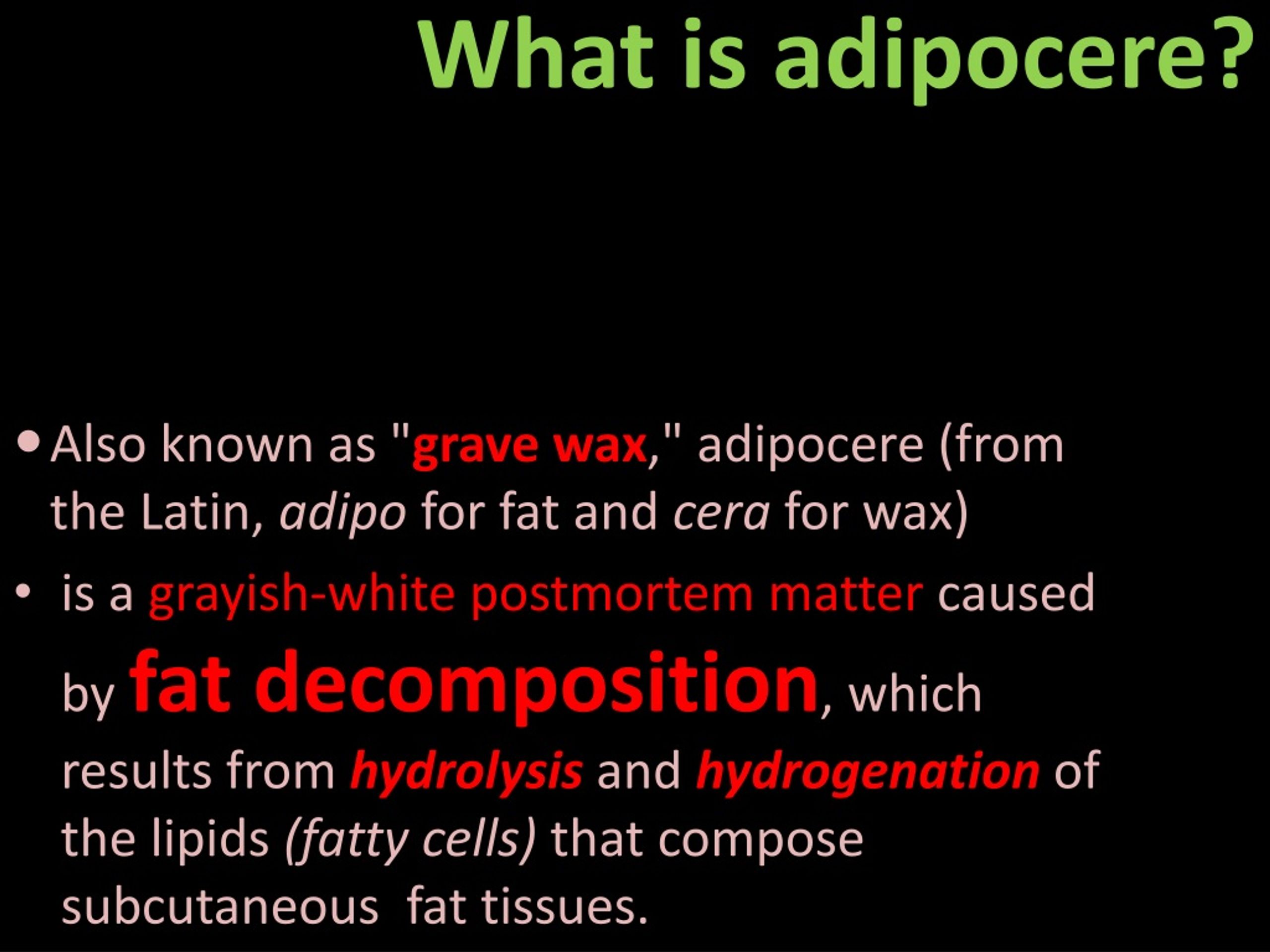
Pin on Photography in Collections
Adipocere, also called corpse wax or grave wax, is formed by fats breaking down in ideal conditions (wet and low oxygen). In human decomposition it can encompass the entire corpse and turn hard, preserving the body for many many years- this is very different from what we deal with when cleaning bones.

The posterior of a puparium after cleaning to remove adipocere which... Download Scientific
Adipocere (Grave Wax) Adipocere,. The formation of grave wax is the transformation of subcutaneous fatty tissue into a whitish-gray granular mass with an initially waxy and somewhat greasy consistency (Takatori and Yamaoka 1977; Takatori 2001; Yan et al. 2001). The consistency becomes more solid over time due to drying out.

ADIPOCERE aka CORPSE WAX (Ask a Mortician) YouTube
Adipocere ( / ˈædɪpəˌsɪər, - poʊ -/ ), also known as corpse wax, grave wax or mortuary wax, is a wax-like organic substance formed by the anaerobic bacterial hydrolysis of fat in tissue, such as body fat in corpses. In its formation, putrefaction is replaced by a permanent firm cast of fatty tissues, internal organs, and the face.

Adipocere 101 How To Prevent and Remove Grave Wax From Bones HTML PDF
Adipocere is an unusual product of fatty tissue decomposition that may occasionally be found in bodies. Two cases of diving fatalities in a limestone cave filled with fresh water are reported to demonstrate the features of adipocere, with a literature review.The bodies of a 20-year-old male and 22-year-old female diver were retrieved 11 and 10 months after their deaths, respectively.

PPT Chapter 12 Human Remains PowerPoint Presentation, free download ID5839857
Adipocere, or grave wax (adipo = fat, cere = wax), is a distinctive decomposition product composed primarily of fatty acids (FA) and their alkali salts. FA result from the bacterial enzymatic hydrolysis of body fats.

Trachoma Adipocere Corpse Wax Trachoma / Yakisoba Old Grindered Days Records
The formation of adipocere (commonly known as grave wax), a spontaneous inhibition of postmortem changes, has been extensively analyzed in forensic science. However, soils in which adipocere formation occurs have never been described in detail. Therefore, this study is intended as a first step in the characterization of soils containing adipocere.

PPT Chapter 12 Human Remains PowerPoint Presentation, free download ID5839857
Adipocere, also known as corpse wax or the fat of graveyards, is a product of decomposition that turns body fat into a soap-like substance. Corpse wax forms through a process called.

PPT Chapter 12 Human Remains PowerPoint Presentation, free download ID5839857
Abstract: Adipocere, or grave wax (adipo = fat, cere = wax), is a distinctive decomposition product composed primarily of fatty acids (FA) and their alkali salts. FA result from the bacterial enzymatic hydrolysis of body fats. Reactions with ammonia and alkali metals originating from body fluids and pore waters of the depositional environment produce alkali salts of FA (soap).

Grave Wax Adipocere Formation (Pestilent Formation Split CD with Claws) YouTube
Adipocere is a crumbly, soap-like postmortem product that forms from soft tissue in a variety of environments. The timing of the formation and degradation of adipocere depends largely on the environmental circumstances. Once formed, adipocere can persist for hundreds of years, acting as a preservative.

PPT Forensic Evidence PowerPoint Presentation, free download ID4132482
One of the most useful functional properties to be imparted to cotton products is wrinkle resistance and dimensional stability. A high level of wrinkle-resistant performance may be referred to as "durable press," "wrinkle free," or "permanent press.". When reference is made to. a lower degree of performance, the terms "wrinkle.

Adipocere 101 How to Prevent and Remove Grave Wax From Bones
Corpse wax Records of adipocere extend back to the exhumation of remains in a Paris cemetery at the end of the 18th century. Sometimes considered a form of mummification, it forms when.

Cadaver STAFS2009003 removed from rainfilled grave. Crumbly adipocere... Download Scientific
Adipocere ( / ˈædɪpəˌsɪər, - poʊ -/ [1] [2] ), also known as corpse wax, grave wax or mortuary wax, is a wax-like organic substance formed by the anaerobic bacterial hydrolysis of fat in tissue, such as body fat in corpses. In its formation, putrefaction is replaced by a permanent firm cast of fatty tissues, internal organs, and the face. History

Release 'Adipocere' by The Grave Wax Orchestra (Deep Lake Records, DLR003)
Adipocere, also called corpse wax or grave wax, is formed by fats breaking down in ideal conditions (wet and low oxygen). In human decomposition it can encompass the entire corpse and turn hard, preserving the body for many many years- this is very different from what we deal with when cleaning bones.

Adipocere La saponificazione dei cadaveri PareStrano.it
Adipocere or grave wax or mortuary wax is the insoluble fatty acids left as residue from pre-existing fats from decomposing material such as a human cadaver. It is formed by the slow hydrolysis of fats in wet ground and can occur in both embalmed and untreated bodies. It is generally believed to have first been discovered by the Frenchman Fourcroy in the 18th century; however, Sir Thomas.

PPT Mummification and Adipocere PowerPoint Presentation, free download ID1288371
Adipocere, "grave wax," is a waxy or greasy decomposition product formed by hydrolysis and hydrogenation of tissue fats. Once formed, it appears stable for extended periods. Adipocere has generally been considered to result from bacterial action, commonly in warm, damp, anaerobic environments.

What is Adipocere or Corpse Wax? Crime Writer Sue Coletta
The role of heat in adipocere formation is to accelerate the breakdown of fatty tissues, which leads to the hydrolysis and hydrogenation of body fats after death by bacterial enzymes. Various factors, such as temperature, humidity, and oxygen availability, influence this process.